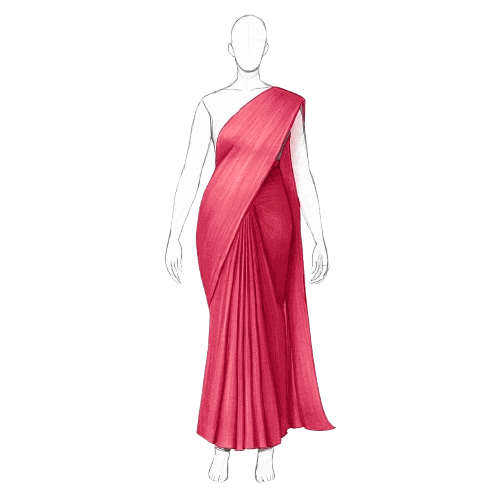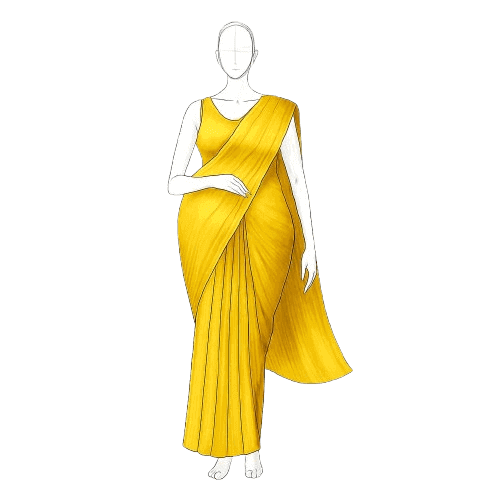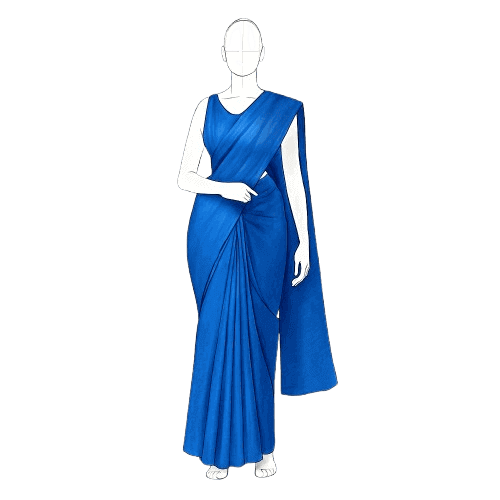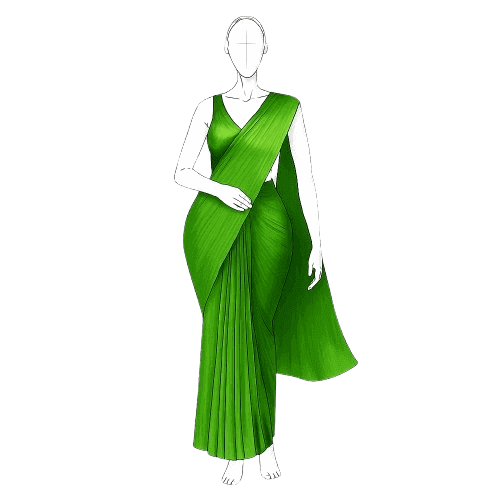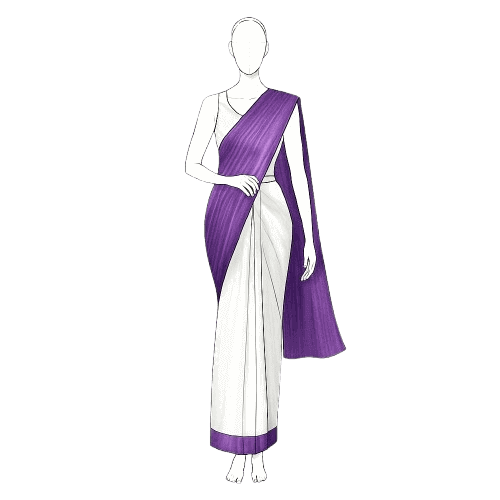We independently review everything we recommend. When you buy through our links, we may earn a commission. Learn more
How to Choose the Right Saree for Your Body Shape
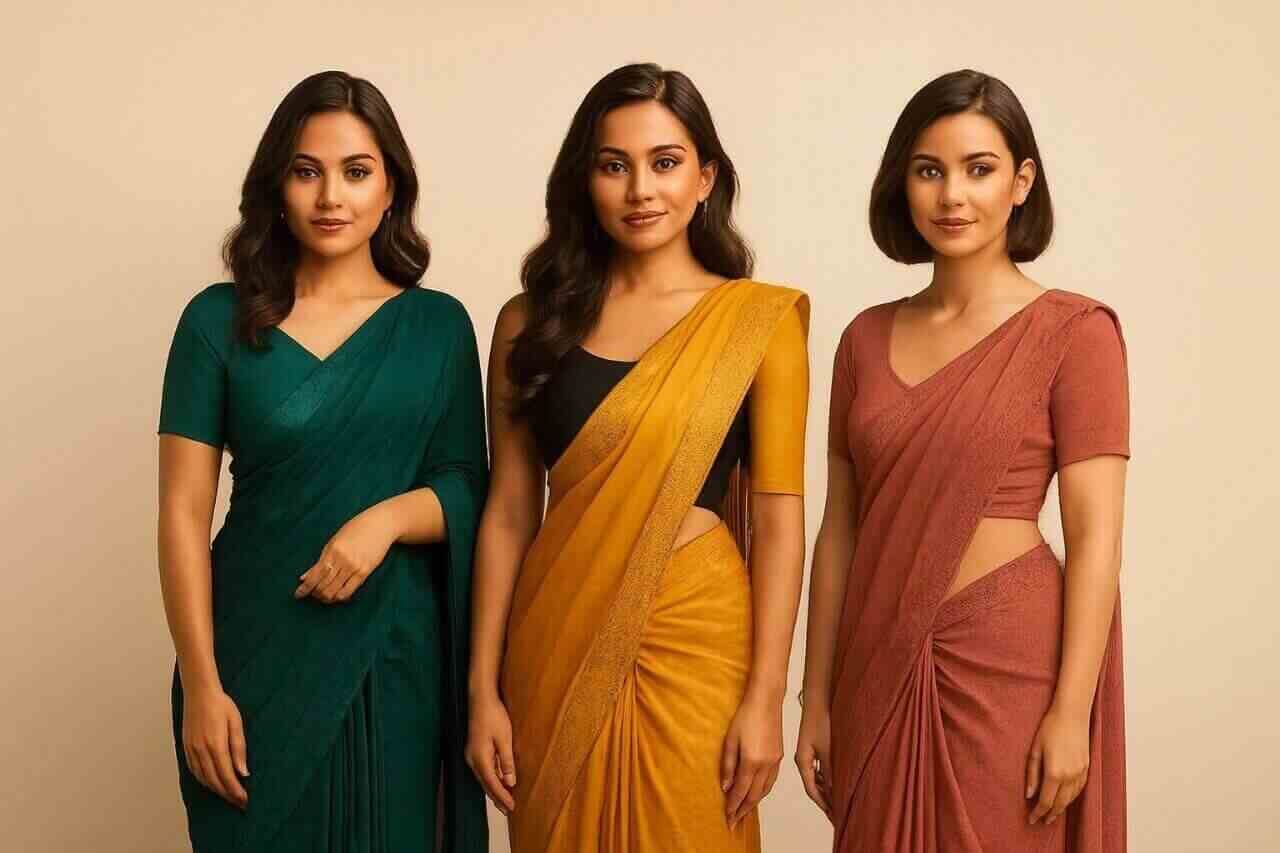
Last updated 25th October 2025
The saree is much more than just clothing it’s a symbol of elegance, tradition, and confidence. However, not every saree flatters every body type. If you’ve ever worn a saree and felt it didn’t sit right maybe it made you look broader, shorter, or simply felt off the issue wasn’t you, but the choice of saree.
The good news is that with the right fabric, draping style, and subtle styling tricks, you can completely transform how a saree looks on you. In this detailed guide, we’ll share body shape specific tips, a practical comparison table, real styling hacks, and visual references to ensure your next saree enhances your natural beauty effortlessly.
This isn’t just another fashion blog it’s a practical, easy-to-follow guide you can revisit before any big event to look and feel your best.
Why Body Shape Matters in Saree Selection
Think of a saree as a canvas and your body as the artwork it’s about choosing the right frame to highlight your best features. Just as a wrong frame can diminish a painting’s appeal, the wrong saree can overshadow your natural elegance. Understanding how fabric, drape, and design interact with your body shape is key to looking and feeling your best.
Fabric: The Foundation of Fit
The fabric you choose plays a pivotal role in how a saree drapes and flatters your body. Lightweight fabrics like chiffon, georgette, and crepe hug the body well and are more flattering for curvier figures. Heavy fabrics like silk, brocade, or Kanjivaram add volume and structure, making them ideal for leaner body types.
Draping Style: Sculpting Your Silhouette
The way you drape your saree can significantly impact your look. Experiment with different draping styles to find what flatters your body shape the best. For instance, the Nivi drape, with pleats tucked in front, is a good option for creating a slimming effect and balancing proportions.
Prints and Borders: Directing the Eye
Prints and borders can influence how your body proportions are perceived. Vertical stripes or patterns can elongate your figure, while horizontal prints may add width. Similarly, the width of the border can affect visual balance thin borders can make you appear taller, while wide borders can add volume.
Choosing What Flatters You
Instead of blindly following trends or celebrity looks, focus on selecting sarees that highlight your body’s strengths. Opt for fabrics, draping styles, and designs that enhance your natural beauty and make you feel confident.
Quick Comparison: Sarees for Different Body Shapes
If you want a quick reference before we dive into details, here’s a simplified table:
| Body Shape | Best Fabrics | Styling Tricks |
|---|---|---|
| Pear Shape | Georgette, chiffon, crepe | Light colors, minimal borders, detailed blouses |
| Apple Shape | Silk blends, organza | Long pallu drape, V-neck or layered blouses |
| Petite | Chiffon, georgette | Vertical prints, thin borders, sleeveless blouses |
| Hourglass | Satin, chiffon, soft silk | Well-pleated drapes, fitted blouses, highlight waist |
| Tall | Silk, cotton, organza | Bold prints, wide borders, structured blouses |
This gives you a snapshot, but the real magic is in the details. Let’s break it down.
Saree Tips for Different Body Shapes
1. Sarees for Pear-Shaped Body
Pear-shaped women usually have narrower shoulders and broader hips. This is one of the most common body types in India, and while it’s naturally graceful, the wrong saree can exaggerate the hip area.
Styling Tips for Pear-Shaped Bodies
For pear-shaped bodies, choose lightweight fabrics like chiffon, georgette, or crepe that drape softly and avoid adding volume to the hips. Lighter shades and plain drapes help keep the focus balanced. Embellished or embroidered blouses draw attention upward and create a flattering silhouette.
Avoid heavy borders at the bottom and thick pleats around the waist, as they can emphasize the hips. For parties, a subtle saree paired with a detailed blouse instantly balances the look with minimal effort.
2. Sarees for Apple-Shaped Body
Apple-shaped women carry more weight around the tummy and bust, with relatively slimmer arms and legs. The challenge here is to create structure and elongation.
Styling Tips for Apple-Shaped Bodies
Apple-shaped bodies benefit from structured fabrics like silk blends, organza, or raw silk that don’t cling to the midsection. Draping the pallu long and loose creates a vertical line, making the body appear taller and slimmer. Blouses with V-necks or layered details help shift focus away from the tummy.
Avoid clingy fabrics like satin or very thin chiffon, and skip crop-length blouses that cut across the widest area of your torso.
Styling Tip: A well-tied kamarbandh (waist belt) over the pallu can define your waist elegantly, giving structure without exposing bulk.
3. Sarees for Petite Body Type
Petite women often struggle with sarees overwhelming their frame. The key here is elongation using prints, borders, and draping to look taller.
Styling Tips for Petite Body Type
Rectangular bodies look best in lightweight fabrics like georgette or chiffon that flow without adding bulk. Vertical stripes or narrow borders create a lengthening effect, while sleek blouses sleeveless, strappy, or boat-neck add elegance and maintain a balanced silhouette.
Avoid heavy silks, sarees with wide borders, oversized motifs, or bold prints, as they can make the frame appear shorter and boxier.
Styling Tip: Tuck in your pallu neatly and keep pleats slim. High heels with a flowing saree can add both height and elegance.
4. Sarees for Hourglass Figure
Hourglass figures Saree have a balanced bust and hips with a defined waist , a silhouette many admire. The aim is to highlight that natural waist without overdoing it.
Styling Tips for Hourglass Body Shapes
Hourglass figures shine in fabrics like satin, chiffon, and soft silk that drape smoothly and accentuate natural curves. Well-placed pleats and a slightly cinched waist highlight your shape, while blouses that follow your body line such as sweetheart necklines, fitted sleeves, or structured backs enhance your silhouette gracefully.
Avoid extremely loose or shapeless drapes that hide your waist, as well as oversized or boxy blouses that interrupt the natural curve of your body.
Styling Tip: Consider light padding or structured blouses for formal events this keeps the silhouette polished while maintaining comfort. A slim belt over the saree (styled subtly) can also add a modern touch without masking curves.
5. Sarees for Tall Body Type
Tall women Saree benefit from proportion and presence; the goal is to balance verticality while adding structure or softness depending on the occasion.
Styling Tips for Tall Body Shapes
Tall frames look best in heavier fabrics like silk, cotton-silk blends, or organza that provide structure and presence. Bold prints, wide borders, and layered embroidery balance your height, while full-sleeve or boat-neck blouses add elegance and break vertical lines gracefully.
Avoid extremely plain, single-toned sarees with thin borders as they can make your frame appear lanky, and steer clear of very short pallus that get lost on taller bodies.
Styling Tip: Use statement borders or large motifs strategically on the pallu or border to create focal points that enhance the overall look. Heels work well but choose comfortable heights for long events.
Saree Draping Hacks That Work for Everyone
No matter your body type, these hacks are universal game changers:
- Pin with Purpose: Use small safety pins under pleats to keep them sharp all day. This prevents the “bulky waist” look.
- Belt It Right: Modern belts or traditional kamarbandhs keep your saree in place and add definition.
- Play with Pallu: An open pallu adds grandeur, while a pinned, structured pallu creates a sleek, slimming effect.
- Balance Accessories: If your saree is heavy, keep jewelry minimal. If your saree is plain, statement jewelry uplifts the look.
- Test the Mirror Twice: Before stepping out, do a 360° check sit, walk, and lift your arms to ensure pleats stay in place and the pallu length is comfortable.
Saree Care & Storage Tips
A saree is an investment. How you store and care for it decides how long it stays beautiful:
- For silk sarees: Wrap them in muslin cloth and refold every 3 months to prevent creases.
- For chiffons and georgettes: Hang them instead of folding to avoid wrinkles.
- Avoid plastic covers: They trap moisture and cause yellowing. Use cotton covers instead.
- Dry cleaning matters: For delicate fabrics like silk or organza, always dry clean instead of hand-washing.
Pro tip: Place a small packet of dried neem leaves in your saree cupboard. It keeps away insects without harming fabric. Rotate sarees occasionally to avoid permanent fold lines.
Common Saree Mistakes to Avoid
Even with the right saree, small styling errors can ruin the look. Here are the most common:
- Wearing ill-fitted blouses: A blouse that’s too tight or too loose throws off the saree drape. Ensure it fits well across the shoulders and bust.
- Ignoring footwear: Always decide footwear before draping the length of your saree depends on it.
- Over-accessorizing: Bangles, necklaces, earrings, hair accessories too much at once can clutter the look. Choose 1-2 focal accessories.
- Poor pleating: Messy pleats make even an expensive saree look sloppy. Practice neat, crisp pleats or use pleat clips for consistent results.
- Wrong pallu length: Too short looks unfinished; too long becomes a trip hazard. Aim for pallu that reaches mid-calf for ease and grace.
Final Thoughts
A saree is more than just clothing it’s a way to showcase your personality and style. The key to looking your best lies in selecting a saree that complements your body type. For pear-shaped frames, focus on blouse designs that draw attention upward and balance your silhouette. Apple-shaped bodies benefit from longer, flowing pallus that create a vertical line and elongate the torso. Petite frames can appear taller with vertical patterns, narrow borders, and slim draping. Hourglass figures shine when the waist is highlighted with structured pleats and fitted drapes, emphasizing natural curves. For tall individuals, bold borders, rich prints, and statement motifs bring balance and add visual interest. By understanding how fabrics, drapes, and styling choices interact with your shape, you can wear any saree with confidence and elegance.
The beauty of sarees is that they never go out of fashion. By understanding your body shape and making thoughtful choices, you’ll never have to ask again: “Does this saree suit me?”
For more fashion hacks, guides, and product recommendations, check the Fayorax Articles & Guide.
If you are looking for the best curated products across categories, you can explore the Fayorax for handpicked selections that combine quality, value, and reliability.
Published 25th September 2025
About the Author

Soma Shiina | Beauty & Lifestyle Writing
Hi, I’m Soma a professional writer and blogger passionate about beauty, eco-friendly products, and sustainable household living. I specialize in creating insightful, research-backed articles that help readers make mindful lifestyle choices. My writing focuses on reviewing products, sharing eco-conscious tips, and highlighting innovations that make daily life both beautiful and sustainable.
